All 41 workers rescued from collapsed tunnel in India after 17 days
Workers survived on food and oxygen supplied through steel pipes for more than two weeks
Your support helps us to tell the story
From reproductive rights to climate change to Big Tech, The Independent is on the ground when the story is developing. Whether it's investigating the financials of Elon Musk's pro-Trump PAC or producing our latest documentary, 'The A Word', which shines a light on the American women fighting for reproductive rights, we know how important it is to parse out the facts from the messaging.
At such a critical moment in US history, we need reporters on the ground. Your donation allows us to keep sending journalists to speak to both sides of the story.
The Independent is trusted by Americans across the entire political spectrum. And unlike many other quality news outlets, we choose not to lock Americans out of our reporting and analysis with paywalls. We believe quality journalism should be available to everyone, paid for by those who can afford it.
Your support makes all the difference.All 41 workers have been rescued from a tunnel in India after being trapped for more than two weeks.
The workers became stuck in the tunnel on 12 November, when a landslide caused a portion of the 2.8-mile tunnel they were building in Uttarakhand state to collapse about 200m (650ft) from the entrance. They survived on food and oxygen supplied through narrow steel pipes for 17 days.
Crowds waved banners reading “Bharat Mata ki Jai,” or “Long live mother India,” and set off firecrackers as the workers are pulled out through a passageway made of welded pipes, where rescuers previously pushed through dirt and rocks.
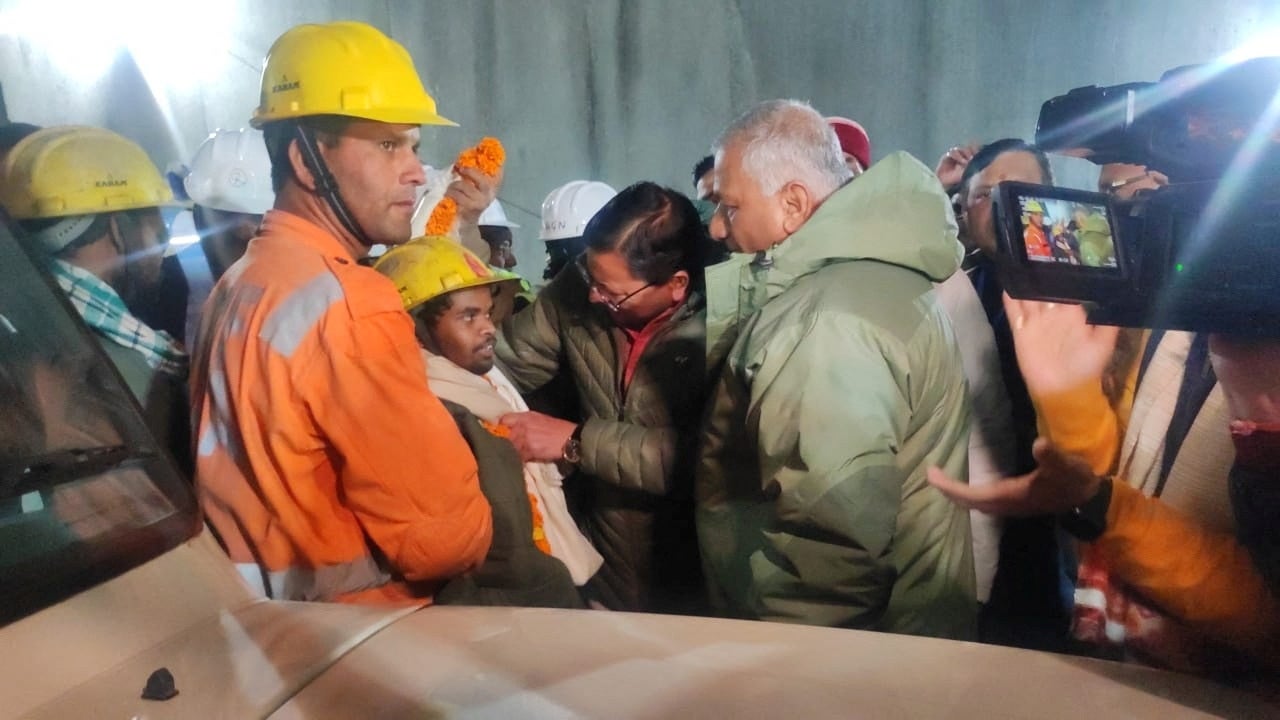
As the first worker was pulled out, Pushkar Singh Dhami, the top elected official in the state of Uttarakhand, presented him with a garland and hung it around his neck as rescuers, officials and relatives cheered.
Nitin Gadkari, the minister of road transport and highways, said on X, formerly Twitter, that he was “completely relieved and happy” after all were rescued from the Silkyara Tunnel in Uttarkashi after an ordeal that lasted 17 days.
“I am very happy that all the 41 trapped workers have come out and their lives have been saved,” he said in a video message posted on X.
Mr Gadkari added that “this was a well-co-ordinated effort by multiple agencies, marking one of the most significant rescue operations in recent years”.
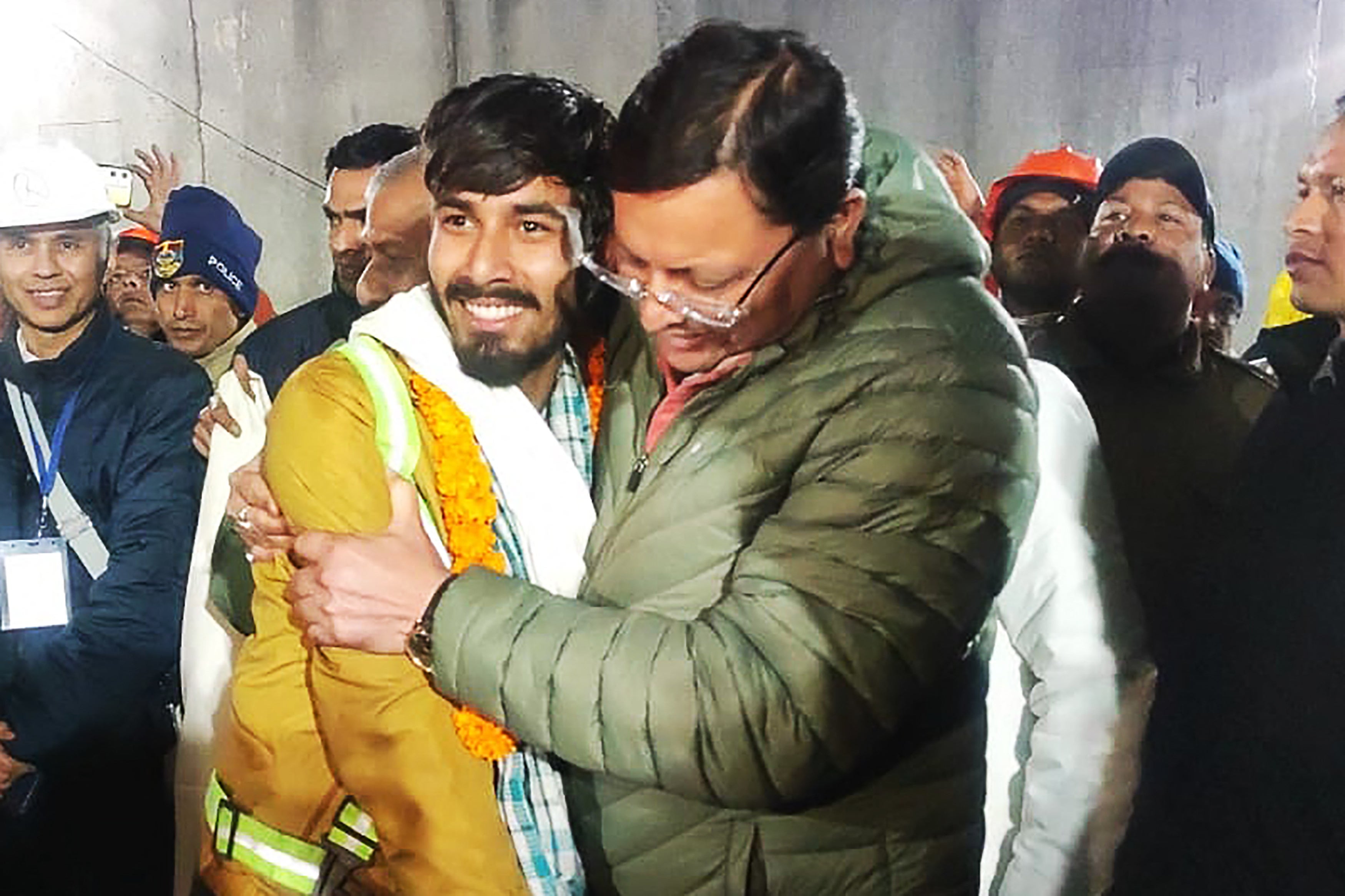
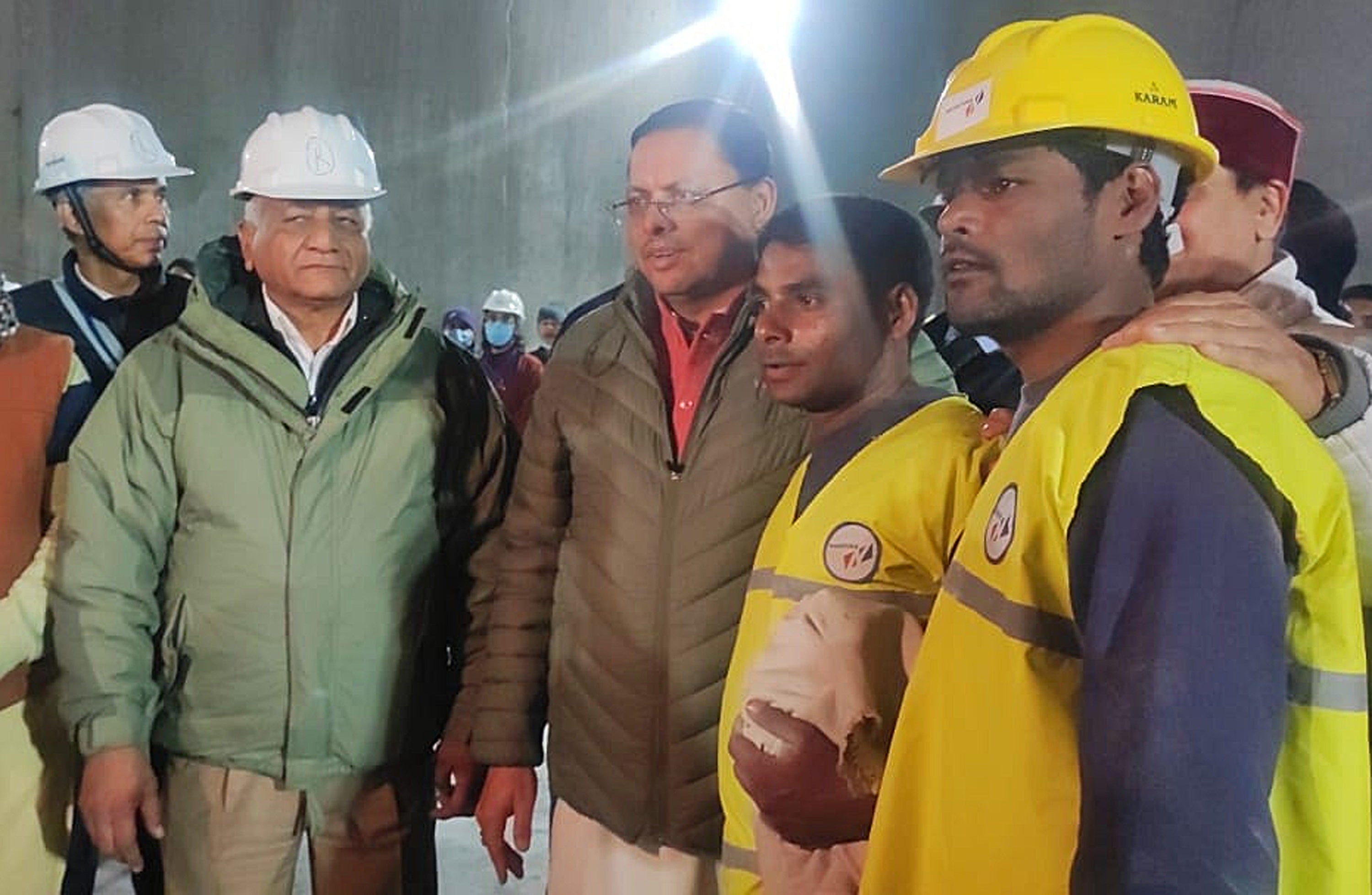
India’s prime minister, Narendra Modi, praised the “courage and patience” of the trapped workers and those who helped in the rescue.
Kirti Panwar, a state government spokesperson, said about a dozen men had worked overnight to dig through rocks and debris, taking turns to drill using hand-held drilling tools and clearing out the muck in what he said was the final stretch of the rescue operation.
Rescuers resorted to manual digging after the drilling machine broke down irreparably on Friday while drilling horizontally from the front because of the mountainous terrain of Uttarakhand.
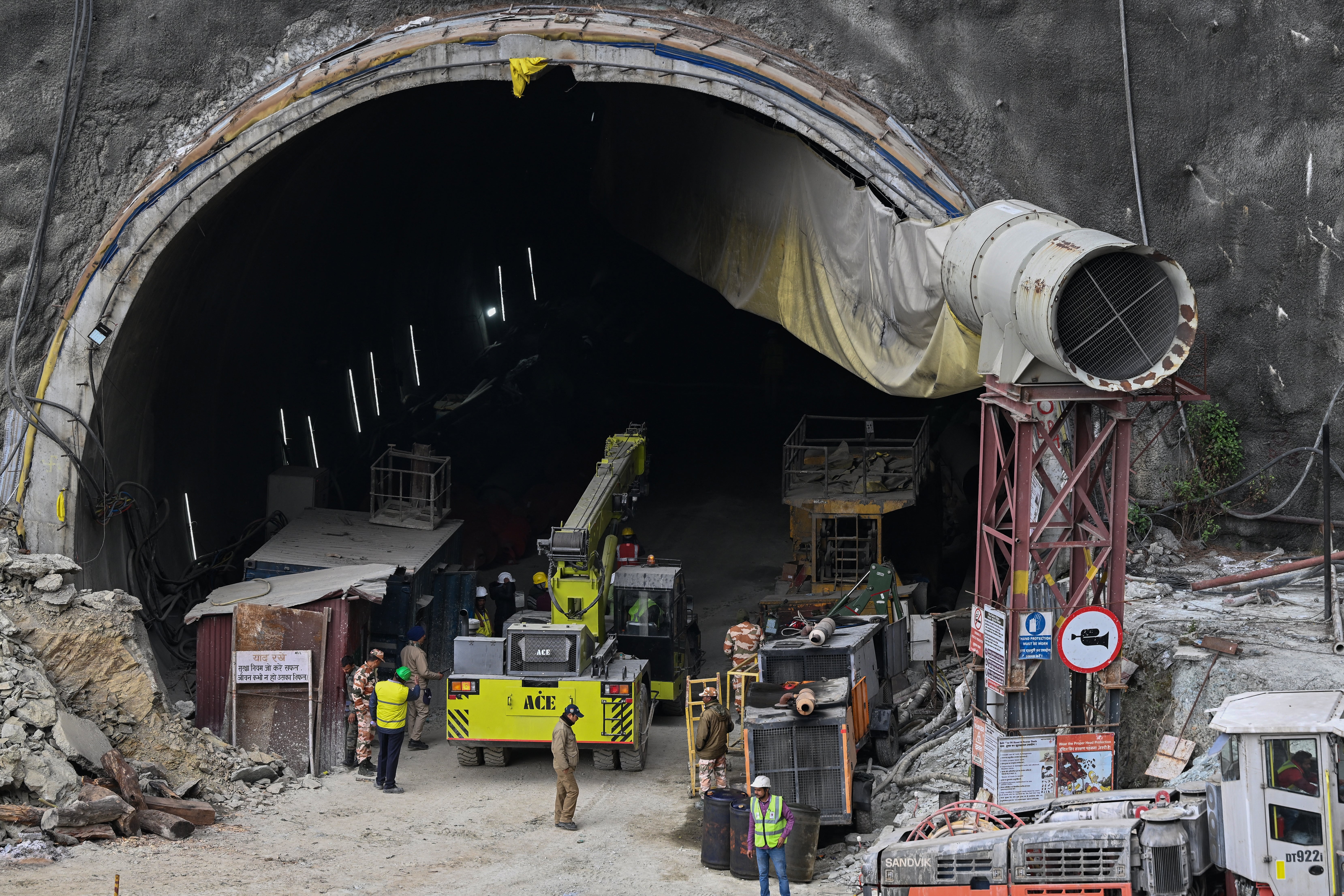
The machine bored through about 47m (nearly 154ft) out of approximately the 57-60m (nearly 187-196ft) needed, before rescuers started to work by hand to create a passageway to evacuate the trapped workers.
Most of the trapped workers were migrant labourers from across the country. Many of their families have travelled to the location, where they have camped out for days to get updates on the rescue effort and in hope of seeing their relatives soon.
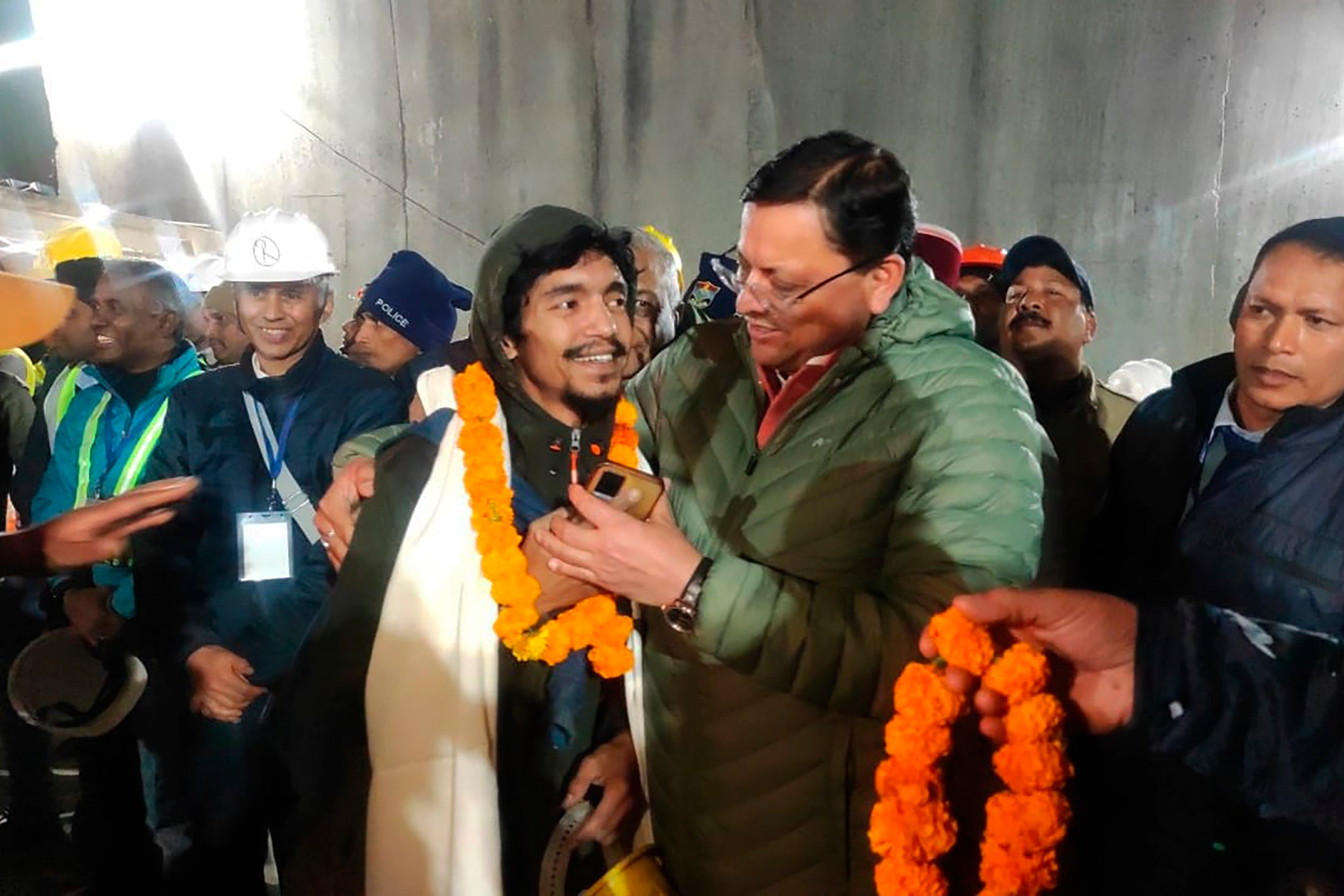
What began as a rescue mission expected to take a few days turned into weeks, and officials were hesitant to give a timeline for when it might be completed.
“I just feel good. The drilling on top of the mountain is coming along perfectly, in the tunnel, it’s coming along very well. I have never said ‘I feel good’ before,” Arnold Dix, an international tunnelling expert who is helping with the rescue, told reporters at the site on Tuesday.
The breakthrough in the 17 days of struggle to free the men came as “rat-hole mining” work commenced on Monday to manually drill and clear the debris to reach the trapped workers.
Two dozen “rat-hole” miners arrived from Delhi and Jhansi cities to enter the tunnel and dig it manually after an auger drilling machine broke down multiple times.
These miners get their name from their technique of extracting coal through narrow pits and crevices in the northeastern state of Meghalaya.

“It was a difficult task, but for us nothing is difficult,” said a beaming Firoz Qureshi, one of the miners, standing with his fellow workers outside the tunnel, their faces patched with white dust after overnight drilling.
“When we saw them inside the tunnel after the breakthrough, we hugged them like they were family,” said Nasir Hussain, one of the six miners.
Dhanpati’s son Ram Sundar was among the trapped workers. “He is my only son, and I am happy he was safely rescued,” Dhanpati told The Telegraph.
“Rat-hole” mining is a hazardous and controversial method used extensively in the northeastern state of Meghalaya to extract thin seams of coal before an environmental court in 2014 banned the practice because of environmental damage and many fatalities.
Join our commenting forum
Join thought-provoking conversations, follow other Independent readers and see their replies
Comments